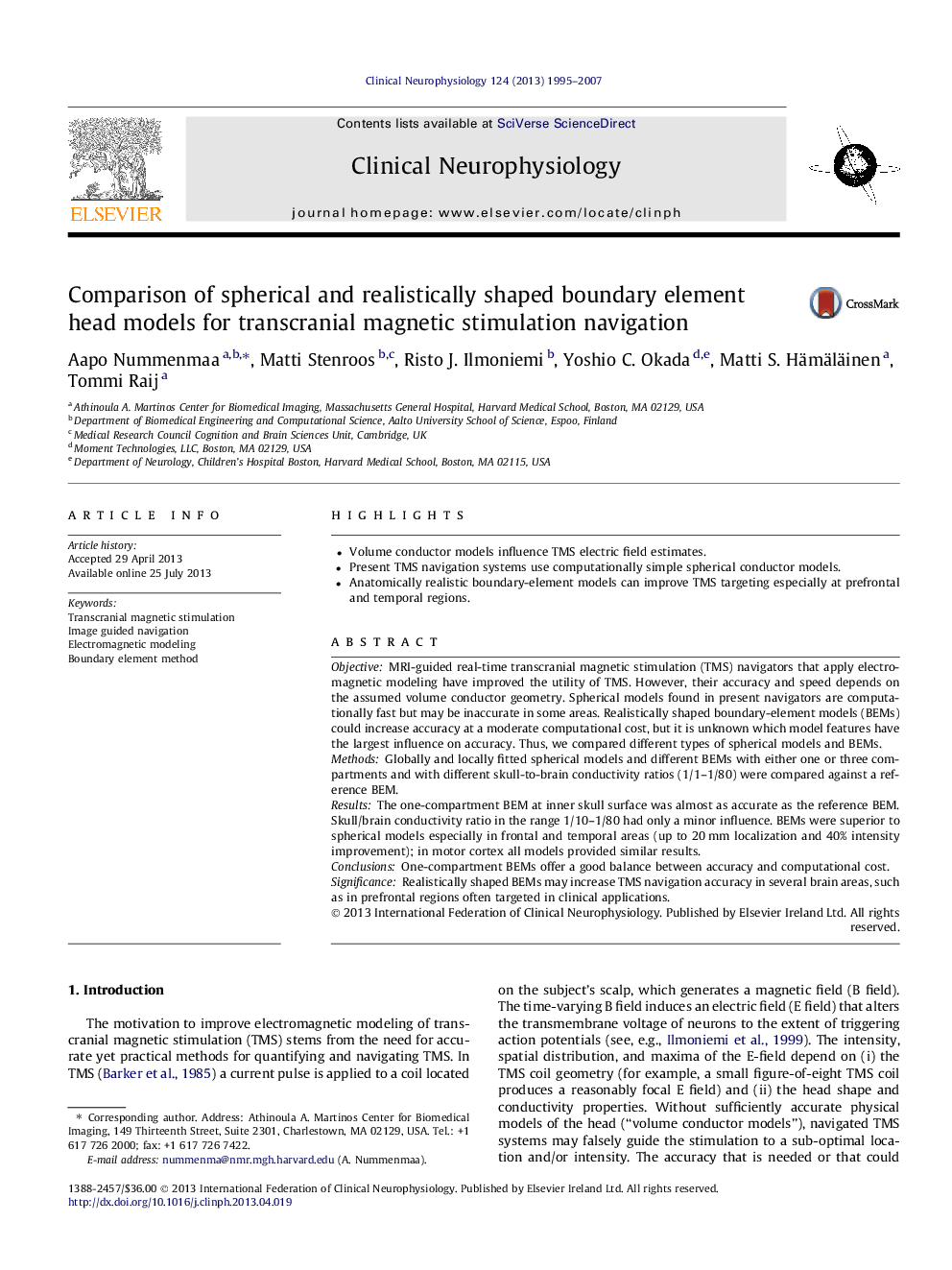| Article ID | Journal | Published Year | Pages | File Type |
|---|---|---|---|---|
| 3044678 | Clinical Neurophysiology | 2007 | 13 Pages |
•Volume conductor models influence TMS electric field estimates.•Present TMS navigation systems use computationally simple spherical conductor models.•Anatomically realistic boundary-element models can improve TMS targeting especially at prefrontal and temporal regions.
ObjectiveMRI-guided real-time transcranial magnetic stimulation (TMS) navigators that apply electromagnetic modeling have improved the utility of TMS. However, their accuracy and speed depends on the assumed volume conductor geometry. Spherical models found in present navigators are computationally fast but may be inaccurate in some areas. Realistically shaped boundary-element models (BEMs) could increase accuracy at a moderate computational cost, but it is unknown which model features have the largest influence on accuracy. Thus, we compared different types of spherical models and BEMs.MethodsGlobally and locally fitted spherical models and different BEMs with either one or three compartments and with different skull-to-brain conductivity ratios (1/1–1/80) were compared against a reference BEM.ResultsThe one-compartment BEM at inner skull surface was almost as accurate as the reference BEM. Skull/brain conductivity ratio in the range 1/10–1/80 had only a minor influence. BEMs were superior to spherical models especially in frontal and temporal areas (up to 20 mm localization and 40% intensity improvement); in motor cortex all models provided similar results.ConclusionsOne-compartment BEMs offer a good balance between accuracy and computational cost.SignificanceRealistically shaped BEMs may increase TMS navigation accuracy in several brain areas, such as in prefrontal regions often targeted in clinical applications.
